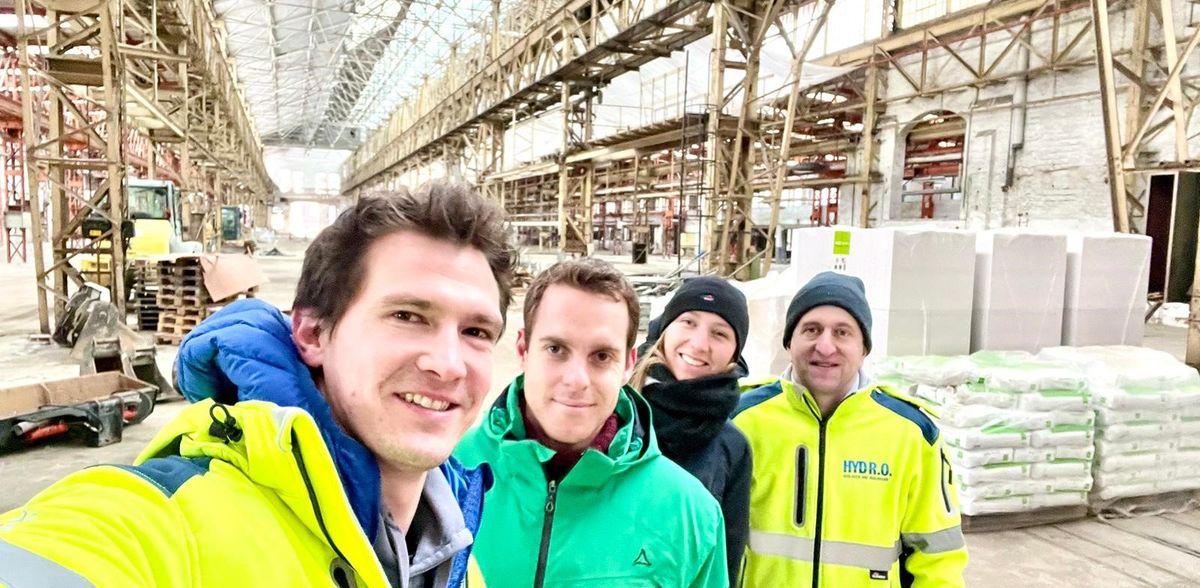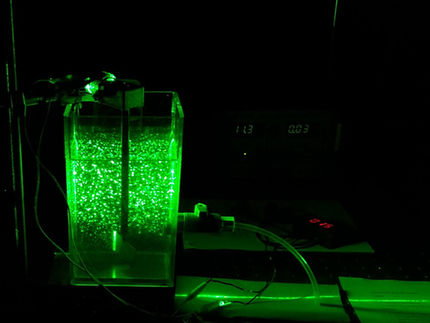PFAS contaminated water becomes clean again
Promising and environmentally friendly process developed
Advertisement
There are many man-made environmental pollutants. One of the most serious is pollution with the harmful perpetual chemical PFAS, which can be found in many soils and waters and thus also in our food. Although it is possible to remove it, it is costly and produces hazardous waste. Now, researchers at the Fraunhofer Institute for Interfacial Engineering and Biotechnology IGB have succeeded in developing a process that could remove PFAS from contaminated water in an energy-efficient way. The AtWaPlas project ended these days after two years of research work with concretely applicable results.
Per- and polyfluoroalkyl substances, or PFASs for short, do not actually occur in nature. Industrially produced, however, this group of more than 10,000 chemicals can be found in many everyday items. Whether in dental floss, baking paper, outdoor clothing or extinguishing and crop protection agents - everywhere PFAS ensure that the products are water-, grease- and dirt-repellent. Actually not bad, but: they are extraordinarily stable, cannot be degraded by light, water or bacteria, and can now be detected in thousands of places in Germany alone in soil, water and groundwater, and thus also in our food. Thus, these toxic eternity chemicals also accumulate in the human body, with significant health effects ranging from organ damage to cancer or developmental disorders.
Theoretically, there are ways to remove PFAS from the environment. However, these are extremely complex and expensive. Filtering with activated carbon, for example, binds PFAS but does not remove them, so that the remains have to be disposed of or stored in hazardous waste. This is a serious environmental problem that time is running out to solve.
Plasma destroys the molecular chains of PFAS chemicals
For this reason, researchers at the Fraunhofer Institute for Interfacial Engineering and Biotechnology in Stuttgart, together with their industrial partner HYDR.O. from Aachen, have set themselves the task of developing an efficient, cost-effective process to eliminate the toxic substances as completely as possible in the joint project AtWaPlas (for: Atmospheric Water Plasma Treatment) as early as 2021. The IGB was responsible for the research work, while the water samples were taken by the project partner, which specializes, among other things, in the remediation of contaminated sites.
After only two years of project work, the researchers led by Dr. Georg Umlauf, an expert in functional surfaces and materials, have succeeded in developing a process based on the use of plasma, which can be used to break down the molecular chains of PFAS - even to the point of complete mineralization of the environmental toxin.
Plasma is an ionized and thus electrically extremely active gas that the researchers generate by applying a high voltage in a cylindrical, combined glass and stainless steel cylinder. Contaminated water is then passed through the reactor for purification. In the plasma atmosphere, the PFAS molecular chains are broken and thus shortened. The process in the closed loop is repeated several times, each time shortening the molecular chains by another piece, until they are completely broken down.
The toxins are broken down after a few hours in the reactor
The research was started in a small laboratory reactor with a sample volume of half a liter. "We were able to replace this relatively quickly with a 5-liter pilot reactor and experiment on a larger scale," Umlauf reports. "The next step now would be an even larger water tank - certainly feasible."
The water the researchers used for their tests was not tap water with PFAS added, but "real water" - so-called real samples. "The water comes from PFAS-contaminated areas and is a wild mixture of a wide variety of particles such as suspended solids and organic turbidity," Umlauf says. "No problem for the purification process, as our tests showed: After only two hours of pumping the groundwater samples through the reactor, we observed an appreciable reduction in carbon chain length; after six hours, the PFAS concentration was significantly reduced, meaning that a large part of the chemicals had been removed from the sample. This is consistent with conjectures expressed in the literature some time ago. In other words, we were able to prove that practice is consistent with theory."
With the same setup, the plasma method can also be used to purify other water contaminants, such as drug residues, other industrial chemicals or pesticides. This was investigated in previous projects WaterPlasma and WasserPlasmax. With a little further development work, the reactor could also be operated energy-efficiently with ambient air: "We envisage the plasma plant being located in containers that can be deployed on a mobile basis at local contaminated sites or wells in order to treat drinking water flexibly and in an environmentally friendly manner," Umlauf ventures a look into the future.
Presentation of the process also at the wastewater colloquium on September 25, 2023
The latest results for the treatment of real samples were already presented by the project partner Hydr.O in Paris at the conference "2nd International Congress - Management of Environmental & Health Risks". Here, AtWaPlas was presented for the first time as a process that not only collects PFAS - as in the processes used to date, e.g. by means of activated carbon filters or reverse osmosis - but also eliminates the environmental toxins and, in the most favorable case, even mineralizes them completely.
On June 30, 2023, AtWaPlas was concluded with an official final meeting in Aachen. Here, too, a summary of the most important results was presented. Both project partners particularly emphasized the positive cooperation during the research project.
Together with other topics related to trace substances, the process will also be a topic at the 22nd Colloquium on Wastewater Treatment in Stuttgart on September 25, 2023.
Note: This article has been translated using a computer system without human intervention. LUMITOS offers these automatic translations to present a wider range of current news. Since this article has been translated with automatic translation, it is possible that it contains errors in vocabulary, syntax or grammar. The original article in German can be found here.


































































